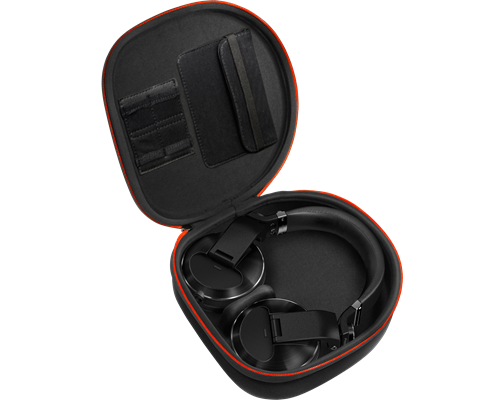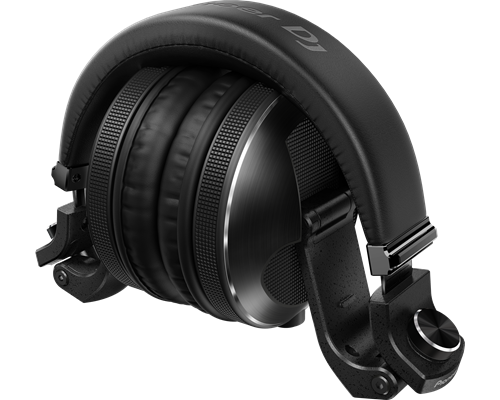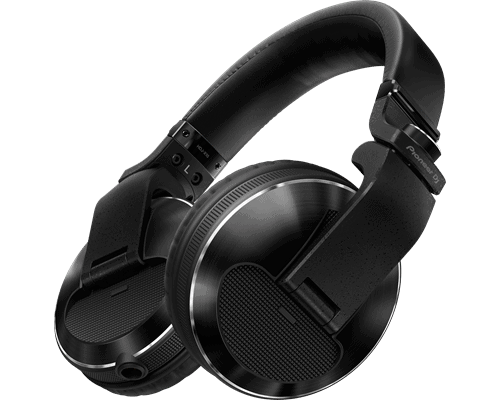In 1994, Pioneer began its trajectory into the world of DJ audio. Now, in 2017, Pioneer has released its flagship DJ headphones, the HDJ-X10. So how do these headphones perform when looking at them under a microscope? I’m about to find out with this full Pioneer HDJ-X10 Headphones Review.
Pioneer HDJ-X10 Headphones Review – The DJ’s Workhorse
In the Box
When I pull the HDJ-X10 headphones out of the box I notice right away the durable carrying case. It feels like it could survive being thrown around in a tour bus or van and I’m immediately impressed with it. As I open the case, I get my first sighting of the HDJ-X10 headphones. They have a utilitarian look but incorporate textural details on the earcup, giving it an intentionally mechanical feel. I like the look overall.
Behind the foam coating of the box, there are two cables: a 1.2 m coiled cable and a 1.3 mm straight cable.
Design
Durability
Picking up the headphones, I feel the balanced weight of them in my hand. The moving parts in the headphones that control and release the spring loaded swivelling ear cups are made from strong metal. Reading Pioneer’s site, they have actually passed the US military’s Standard Shock test. Impressive!
Additionally, the ear pads are coated with a special polyurethane nano-coating which makes them super easy to clean and wipe, especially sweat and dirt. And while I won’t be doing laps around the block to specifically test this out, I am confident in Pioneer’s assessment. The flexible headband seems like, not only will it perform well specifically for DJs who enjoy various positions of the headphones around the neck or on their head, but they will be able to take some abuse. The headphones overall just feel like they could endure heavy usage.

Comfort
I place the headphones on my head and take notice of the fit. They are comfortable, hugging my ears in a way Goldilocks would be proud of: not too tight, not too loose. Just right.
Cheesy metaphors aside, the headband has a soft cushion as well and its bend fits well around my head. Its flexibility makes me think that others, regardless of head size, will feel the same.
Sound
I take the straight cable from the box and plug its multi-pin connector into the headphones. I’ll address this as it was an initial concern of mine: the cables are all easily replaceable by Pioneer, in addition to the ear cups. I was disgruntled that they didn’t have a normal 3.5mm connector but the cables seem very durable themselves. As I was saying, I plug the cable in for my first listen of the Pioneer HDJ-X10 headphones!
Bass
Thick low end. Responsive dynamics. So far so good! After flipping through a few songs I’m realizing these headphones, respond extremely well to hip-hop, electronic, and pop music. I don’t like them so much on rock and folk music. I notice a boost somewhere down around 80 Hz and another broader boost around 100Hz that extends into the mid-range. This lively low end won’t please audiophiles necessarily, but it will definitely please those who like that kind of sound signature.
Mid-range
The low end boost extends to around 200Hz-300Hz. This makes synthesizers sound thick. They retain their detail however, with a particularly nice spaciousness around 500Hz-700Hz. I don’t like the way the midrange responds to most guitars, so any guitar driven music won’t work well here. Pop and hip-hop has an advantage with a boost around 1kHz and 4kHzm making vocals sound present without being harsh.
Treble
In a general sense, the Pioneer HDJ-X10 headphones have a very modern sound. There is a boost around 12kHz that gives the high frequencies a particular crispness. The high frequencies have space and air which I think pushes these headphones into a higher quality of headphone overall.
Sound Stage
Left to right imaging is impressively accurate. It makes modulation, especially in electronic music, sound bigger and wider than other headphones in the price range. The top to bottom imaging isn’t as accurate, but still achieves depth from the subbiness of the low-end.
The sound stage from front to back is interesting. The lows and low-mids have a lot of depth that reach back as intended by the mix. The high frequencies have less space and depth to them. It has the effect of making vocals feel more in-your-face and lower frequencies feel more expansive. It is a very cool effect that, as I mentioned before, sounds strange with certain genres but really cool with others.
Overview
I would highly recommend these headphones for DJs and for folks who love to listen to electronic, modern hip-hop, or indie music with an emphasis on synthesis. These headphones are extremely durable and can be used for everyday use, so for folks who need a pair of headphones they can be rough with that will last a long time, the Pioneer HDJ-X10 headphones are for you. They are well worth their price, $349.99.
The Pioneer HDJ-X10 headphones are available for the best price here:
MajorHiFi may receive commission through retail offers.

MAJORHIFI may receive commissions from retail offers.








